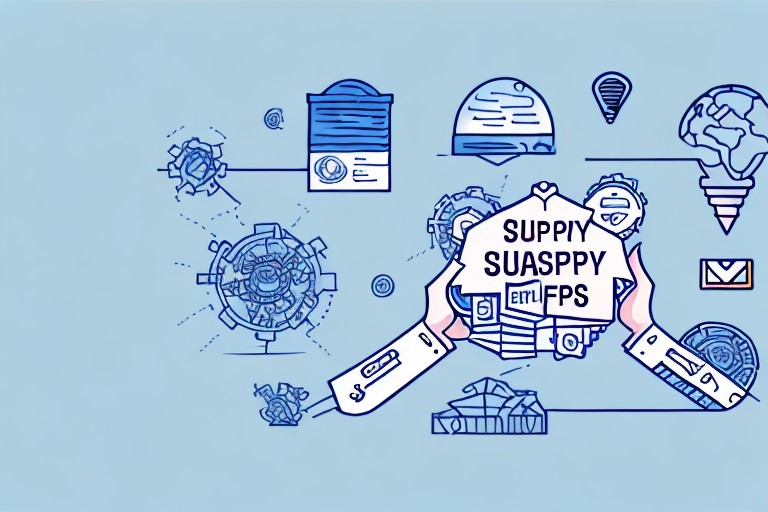How to Reduce Special Delivery Fees in Your Supply Chain
Are you tired of paying exorbitant fees for special deliveries in your supply chain? You're not alone. Many businesses struggle with managing the costs associated with expedited deliveries and other special requests. However, with strategic planning and implementation, it's possible to reduce these fees and enhance the efficiency and profitability of your supply chain. In this article, we'll explore the impact of special delivery fees on your business, analyze the costs involved, identify the contributing factors, and provide actionable tips and best practices for minimizing these fees.
Understanding the Impact of Special Delivery Fees on Your Business
Special delivery fees can significantly affect your business's bottom line. These additional costs, often layered on top of regular shipping charges, can accumulate quickly—particularly for businesses that depend heavily on expedited deliveries. According to a 2022 supply chain report by Supply Chain Digital, expedited shipping accounts for approximately 15% of total shipping costs for e-commerce businesses. Beyond direct expenses, special delivery fees can result in lost sales and dissatisfied customers if prompt delivery promises aren't met.
To mitigate these fees, consider negotiating with your shipping carriers. Many carriers offer discounts for high-volume shippers or businesses that commit to exclusive partnerships. Additionally, exploring alternative shipping methods, such as regional carriers or third-party logistics providers, can yield lower rates for expedited or region-specific deliveries. Research and negotiation of your shipping options are crucial steps to minimizing the impact of special delivery fees and optimizing your overall shipping strategy.
Analyzing the Cost of Special Delivery Fees in Your Supply Chain
Understanding the factors that drive special delivery fees is essential before attempting to reduce them. Common costs associated with expedited deliveries include fuel surcharges, vehicle rental fees, and express service charges. A detailed analysis of your supply chain can help identify these specific costs and inform strategies to reduce them.
Optimizing inventory management is one effective way to decrease the need for special delivery services. By maintaining optimal inventory levels and ensuring that the right products are available in the right quantities at strategic locations, the necessity for expedited shipments can be minimized. Furthermore, consolidating shipments can reduce the number of deliveries and enable better negotiation terms with carriers. Implementing these strategies not only cuts special delivery fees but also enhances the overall efficiency of your supply chain.
Identifying the Factors that Contribute to Special Delivery Fees
Several factors contribute to the accumulation of special delivery fees. Urgency is a primary factor; when customers require products quickly, expedited shipping is necessary, increasing costs. Other factors include distance, mode of transportation, and delivery location. A 2023 logistics study indicates that delivery distance can influence costs by up to 20%, depending on the region.
The size and weight of packages also play a crucial role. Larger and heavier packages require more resources for transport, often necessitating special handling or equipment, which increases delivery costs. Additionally, the fragility or sensitivity of products may require extra care during transportation, further driving up costs. Assessing these factors is vital for determining the most effective and economical delivery methods for your business.
How to Negotiate Special Delivery Fees with Your Suppliers and Carriers
Negotiating with suppliers and carriers is a highly effective strategy for reducing special delivery fees. By fostering strong relationships and demonstrating consistent business value, you can negotiate lower rates for expedited deliveries. Regularly reviewing and renegotiating contracts ensures you are receiving the most favorable rates possible.
Consolidating shipments presents another opportunity to cut costs. Combining multiple orders destined for the same location into a single shipment can lead to significant savings on delivery fees and reduce your carbon footprint by minimizing the number of trips required by carriers.
Consider utilizing alternative delivery methods, such as local couriers or bike messengers, for smaller, urgent deliveries. These options can be more cost-effective and faster within urban areas, offering a seamless alternative to traditional carriers for specific delivery needs.
Tips for Streamlining Your Supply Chain and Minimizing Special Delivery Fees
Streamlining your supply chain is key to reducing special delivery fees. By optimizing inventory management, transportation routes, and delivery processes, the reliance on expedited deliveries can be minimized, thus lowering overall shipping costs. Leveraging data analytics and automation tools can further enhance these optimizations.
Implementing a just-in-time (JIT) inventory system is an effective strategy. JIT involves ordering and receiving inventory only as it's needed, reducing storage costs and mitigating the risks associated with overstocking or stockouts.
Evaluating and optimizing your transportation routes and delivery processes can also lead to cost reductions. Consolidating shipments and exploring alternative transportation options—such as rail or sea freight—for suitable types of shipments can result in more cost-effective delivery methods.
Leveraging Technology to Reduce Special Delivery Fees in Your Supply Chain
Technological advancements can play a pivotal role in reducing special delivery fees. Transportation Management Systems (TMS) provide real-time visibility across your supply chain, enabling informed decisions regarding shipping methods and service levels. Additionally, GPS tracking and driver communication applications can enhance efficiency, reducing the need for expedited deliveries.
Warehouse Management Systems (WMS) can optimize inventory levels, thus decreasing the frequency of rush orders. Electronic Data Interchange (EDI) streamlines communication between suppliers and customers, lowering the risk of errors and delays that can lead to expedited shipping needs.
However, technology is not a universal solution; each supply chain is unique. It's crucial to evaluate which technologies align best with your specific operational needs. Collaborating with a trusted logistics partner can assist in identifying and implementing the most effective technological solutions for your business.
Best Practices for Managing Special Deliveries and Avoiding Extra Fees
Implementing best practices can help manage special deliveries more effectively and avoid additional fees. Clear communication with customers about delivery expectations is essential, as is providing accurate and detailed shipment information to carriers. Utilizing automation tools can also reduce errors and boost efficiency, while regular monitoring of delivery performance ensures alignment with customer expectations.
Establishing clear policies and procedures for handling special deliveries is another critical best practice. Defining which delivery types qualify as special, outlining handling procedures, and specifying applicable additional fees ensures consistency and efficiency across your team.
Building strong partnerships with carriers aids in optimizing delivery processes and minimizing extra fees. Negotiating better rates, collaborating on route planning, and adopting new technologies to enhance visibility and tracking can result in cost reductions and improved customer satisfaction.
Case Studies: Companies That Successfully Reduced Their Special Delivery Fees
Examining real-world case studies can provide valuable insights into effective strategies for reducing special delivery fees. Companies such as Amazon, Walmart, and Target have successfully implemented measures to lower their special delivery costs.
Amazon has reduced special delivery fees by developing an efficient delivery system and investing in their own delivery network, enabling them to bypass third-party services and decrease costs. Walmart achieved fee reductions by offering free in-store pickup for online orders, saving on delivery expenses and driving customers to physical stores. Similarly, Target implemented free same-day pickup for online orders, reducing special delivery fees and enhancing customer convenience.
Future Trends in Supply Chain Management and Reducing Special Delivery Costs
Emerging trends in supply chain management are poised to further reduce special delivery fees. The integration of drones and autonomous vehicles for delivery can streamline processes and cut costs. Developing more efficient transportation routes and logistics networks, as well as incorporating artificial intelligence (AI) and machine learning (ML) tools, can enhance decision-making and operational efficiency within the supply chain.
One noteworthy trend is the adoption of blockchain technology. Blockchain offers greater transparency and traceability, reducing the risk of fraud and errors. It facilitates faster and more accurate transactions, leading to cost savings and enhanced efficiency. As blockchain becomes more prevalent, it is expected to contribute significantly to the reduction of special delivery fees and overall supply chain costs.
In conclusion, minimizing special delivery fees involves a comprehensive approach that includes understanding cost drivers, negotiating with suppliers and carriers, streamlining supply chain operations, leveraging technology, and adhering to best practices. Staying abreast of future trends and technologies will position your business for sustainable long-term success and profitability.






















